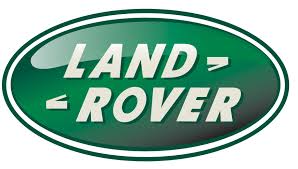L322 Range Rover System Description and Operation

AIR CONDITIONING
82-6
DESCRIPTION AND OPERATION
Description
General
Either a low or high line Air Conditioning (A/C) system is installed on the vehicle. The low line system features
automatic control of a common temperature setting for both sides of the passenger compartment, with manual control
of the blower speed, air recirculation and air distribution. The high line system is fully automatic with separate
temperature settings for the LH and RH sides of the passenger compartment and manual overrides for blower speed,
air recirculation and air distribution. The high line system also incorporates independent temperature and volume
control for the rear passengers. The low and high line systems both include:
l
A refrigerant system
l
An air inlet housing
l
A heater assembly
l
Distribution ducts
l
Two forced ventilation outlets
l
An Automatic Temperature Control (ATC) ECU and sensors
l
An auxiliary coolant pump
l
A coolant valve.
The high line system incorporates the following additional components:
l
A second coolant valve
l
A pollution sensor
l
A rear blower unit.
A Fuel Burning Heater (FBH) system is installed as standard on Td6 models and as an option on V8 models. The FBH
is a supplementary heater installed in the heater coolant circuit. The FBH can be operated without the engine running
to pre-heat the passenger compartment and after the engine starts to reduce the heater coolant warm-up time. On
Td6 models, the FBH also boosts the heater coolant temperature while the engine is running at low ambient air and
engine coolant temperatures, to maintain heater performance at an acceptable level.
Refrigerant System
The refrigerant system transfers heat from the vehicle interior to the outside atmosphere to provide the heater
assembly with dehumidified cool air. The system comprises:
l
A compressor
l
A condenser and receiver drier
l
A thermostatic expansion valve
l
An evaporator
l
Refrigerant lines.
The system is a sealed, closed loop, filled with a charge weight of R134a refrigerant as the heat transfer medium. Oil
is added to the refrigerant to lubricate the internal components of the compressor.
To accomplish the transfer of heat, the refrigerant is circulated around the system, where it passes through two
pressure/temperature regimes. In each of the pressure/temperature regimes, the refrigerant changes state, during
which process maximum heat absorption or release occurs. The low pressure/temperature regime is from the
thermostatic expansion valve, through the evaporator to the compressor; the refrigerant decreases in pressure and
temperature at the thermostatic expansion valve, then changes state from liquid to vapour in the evaporator, to absorb
heat. The high pressure/temperature regime is from the compressor, through the condenser and receiver drier to the
thermostatic expansion valve; the refrigerant increases in pressure and temperature as it passes through the
compressor, then releases heat and changes state from vapour to liquid in the condenser.
